U.S Tank Gunnery
Historical Ebb and Flow of Proficiency
By Robert S. Cameron, Ph.D.
Article published on: October 1, 2024 in the Armor Fall 2024 Edition
Read Time: < 35 mins
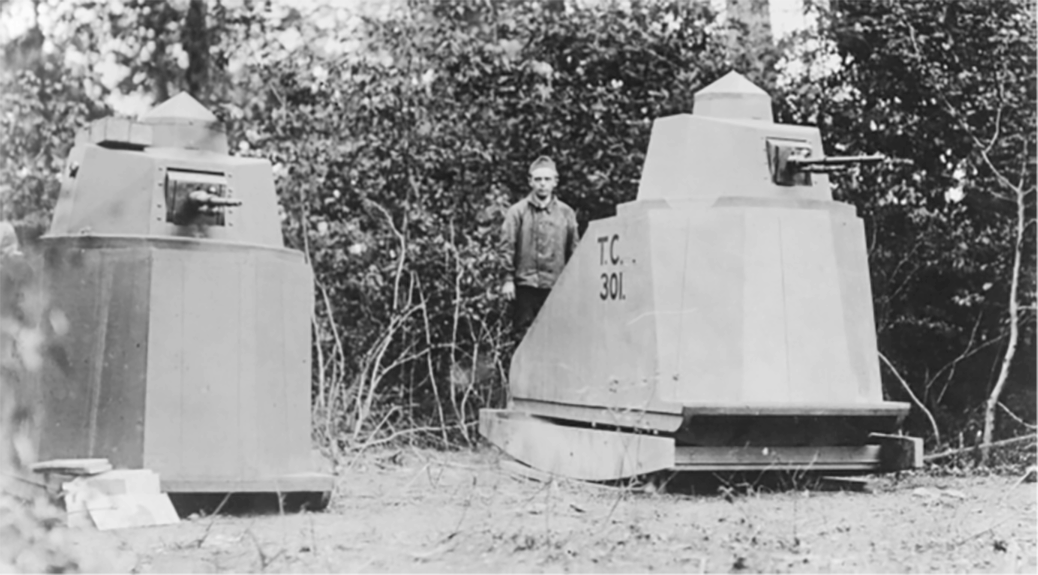
Figure 1. U.S. Tank Corps tank gunnery training devices of World War I. (Photo by U.S. Army Signal Corps)
A gap exists today between the capabilities of tank weapon systems and the ability of crews to employ them to maximum effectiveness. Current tank lethality reflects significant recent improvements to optics, fire control systems, networks, and ammunition. Tanks possess the ability to engage varied targets with precision at ever longer ranges whether stationary or moving. Yet many crews struggle with the basics of tank gunnery. The 2019 III Armored Corps Lethality Study and analysis of the most recent Sullivan Cup Best Tank Crew Gunnery Competition underscore this lack of proficiency. In the latter case, armor units sent representative crews to compete in a series of events designed to test foundational skills emphasized in doctrine. Crews struggled with boresight, target detection and identification, machine gun engagements, and target sensing.1 These issues reflect the culmination of a lapse in tank gunnery spanning years and highlight the linkage between proficiency and broader, Army-wide developments and trends.
World War I and interwar years
In World War I the creation of the first American tank force triggered generation of the Army’s first tank gunnery training program. Its focus lay upon weapons operation and maintenance.2 For crews reliant upon vision slits for situational awareness, subject to sudden vehicle breakdowns, and working in the confines of a steel beast that quickly filled with fumes, simply firing the weapon in the general direction of the enemy proved an accomplishment, particularly in those tanks in which the gunner also served as the loader and tank commander. In the 1920s tank gunnery training retained its focus upon the gunner’s ability to operate and maintain his weapon, refined through the addition of checks on sight usage and target sensing. Live fire engagements constituted the culmination of this training, with a report card maintained for each individual soldier.3
In the 1930s tank gunnery constituted a series of sequential steps from weapons orientation to live fire qualification that entailed engaging a variety of simulated targets from a moving vehicle. Records of individual gunnery skills were maintained at the unit level, and special insignia and financial compensation existed as incentives to achieve high gunnery scores.4 Although these measures marked improvements since the Great War, in practice they tended to result in better paid range marksmen rather than effective tank gunners. More complex gunnery training that involved platoon operations in a tactical environment suffered from the variety of different platforms in service. The small Army tank fleet included obsolescent World War I-era platforms, several variants of newer light tanks, and prototypes issued for testing and evaluation. Moreover, most units lacked a sufficient complement of personnel and platforms even for their peacetime authorization, while the Army’s bifurcated mechanized development program meant still further doctrine and training variations between the Infantry’s tank force and the 7th Cavalry Brigade (Mechanized).*
By decade’s end modifications to tank gunnery training included crew and unit exercises, and a qualification process with more training steps and gateway evaluations prior to a live fire event for record. Reflective of the M2- series of light tanks and M1-series of combat cars, the focus lay upon machine gun engagements at relatively short ranges that did not require complex ballistic solutions. By 1939, however, some infantry tank leaders advocated the concentration of tanks in battalions to better manage and provide uniformity to gunnery training.5 Such benefits were not viable among a tank force scattered across the country in small, understrength units with varied access to firing ranges.+ These ideas coincided with a shift from machine gun armed tanks to ones equipped with a turret-mounted 37mm main gun, exemplified by the M2A4. This weapon required training changes to Figure 1. U.S. Tank Corps tank gunnery training devices of World War I. (Photo by U.S. Army Signal Corps) 2 Fall 2024 reflect the need for accuracy from a stationary position rather than the delivery of suppressive machine gun fire from a moving platform commonplace for much of the decade.*
World War II
In 1940 the creation of the Armored Force in response to wartime developments in Europe marked a major expansion of the Army’s tank component, resulting in the first armored divisions and separate tank battalions. The scale and pace of this expansion undermined tank gunnery proficiency. The emphasis given to training new personnel, organizing new units, and building cadres for the next wave of unit activations diluted the existing talent and eroded overall gunnery knowledge and skills. The first armored divisions and separate tank battalions therefore developed their own training programs, which included gunnery techniques. Reports on their activities were shared with the Armored Force headquarters, which in turn strove to incorporate best practices into its own training efforts. Nevertheless, the absence of a standard gunnery training program made unit and formation commanders the architects and evaluators of their own training. Hence early Armored Force gunnery instruction reflected a broad range of approaches shaped by materiel availability, range access, and unit commander experience. Moreover, commanders who considered maneuver more important to combat effectiveness than gunnery reflected this bias in their training. The only common thread across the force lay in ensuring gunners understood the rudiments of how to fire and maintain their weapons.
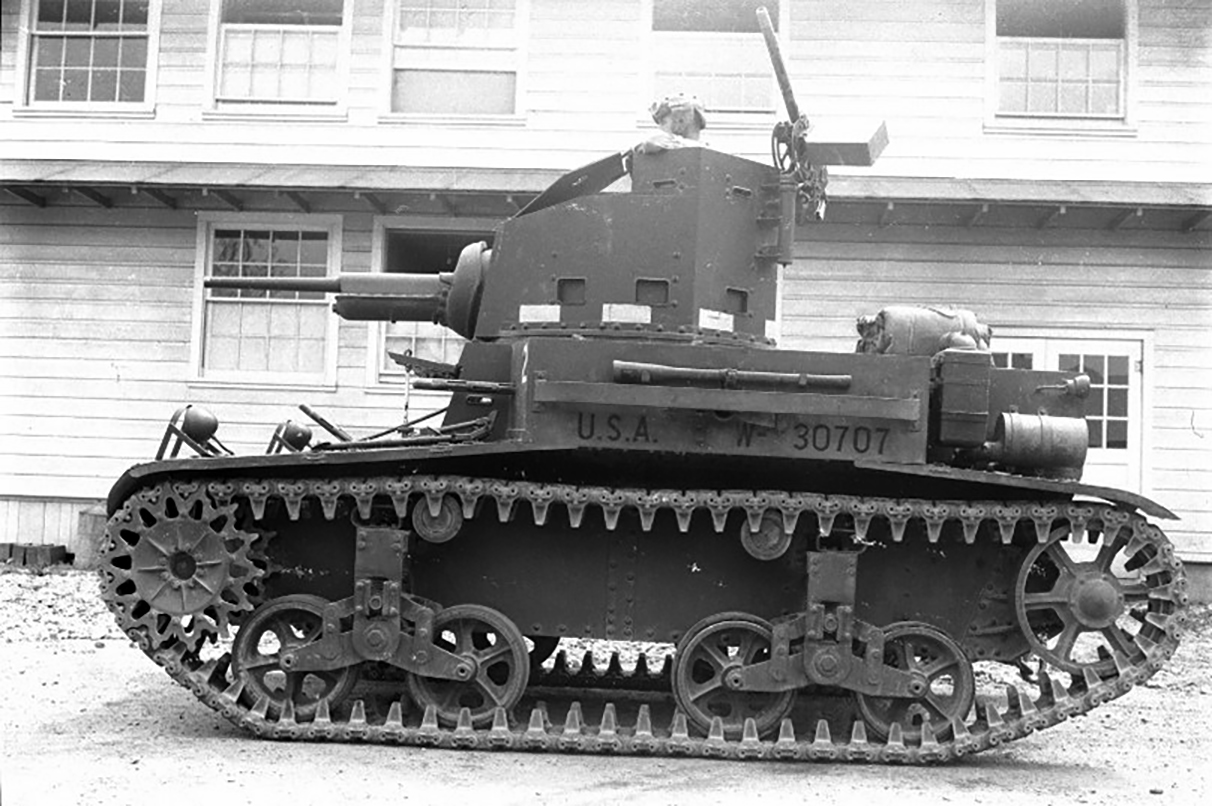
Figure 2. The M2A4 Light Tank with a turret-mounted 37mm gun. (U.S. Army Armor and Cavalry Collection)
The Armored Force sought a gunnery manual to streamline doctrine, reduce training complexity, and provide one standard to enable uniformity in training and employment. The first such manual published in April 1943 — long after the combat debut of American armored units. It provided combat techniques and the first set of principles to guide training. It was updated the following year to reflect combat lessons learned, but the value of these manuals and related doctrinal publications overseas proved limited, since they lagged behind the deployment of armored units to combat theaters and the fielding of newer tanks.
The 1943 manual was not distributed to units until the subsequent winter, while the 1944 manual published in July did not actually reach combat units overseas until December.6Therefore, many units continued to rely upon their own gunnery techniques, despite the uniformity and standardization now in published doctrine.
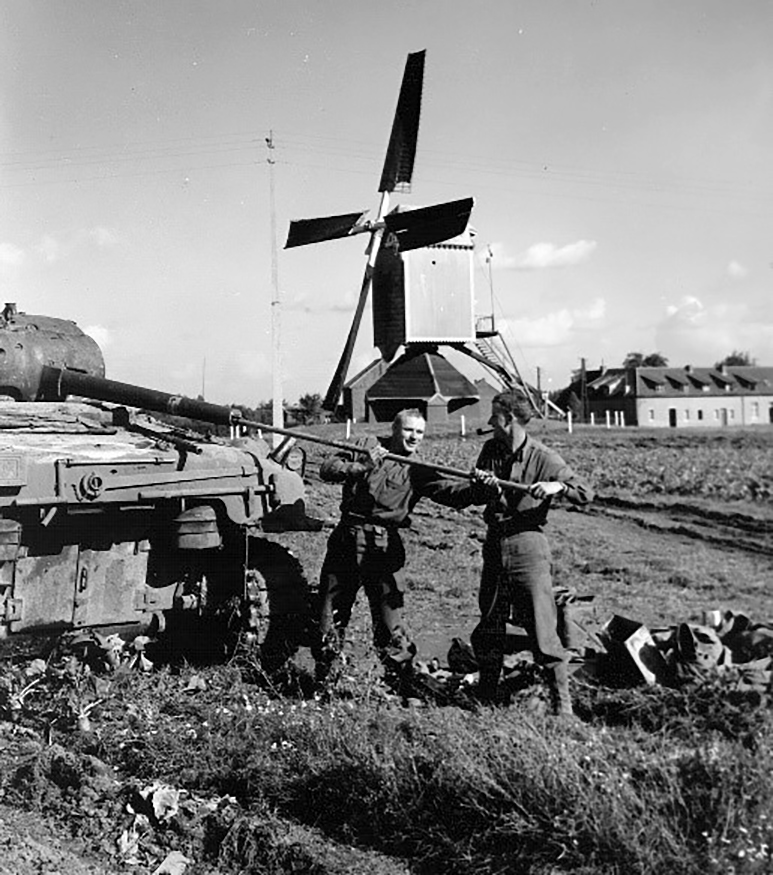
Figure 3. A tank crew cleaning their tank’s main gun after operations in Belgium, September 1944. (U.S. Army Armor and Cavalry Collection)
Officer ignorance posed another problem. The rapid expansion of the Armored Force placed officers in command positions despite minimal knowledge of gunnery. The Armored Force headquarters endeavored to address this problem by implementing a course in gunnery technique in the Armor School. The course began in March 1943 and included a detailed immersion into the techniques and nature of gunnery, starkly contrasting with previous classes that focused upon nomenclature and weapons operation. This course proved a boon to armor leaders — provided they attended it. By war’s end, junior officers and NCOs proved unanimous in their recommendation that commanders of armored units be educated and actively engaged in all aspects of tank gunnery.7
Sustaining tank gunnery proficiency in deployed units proved difficult. Combat losses destabilized both crews and unit command arrangements. Trained replacements arrived, but often the excessive time lag between the completion of training and arrival in their assigned unit necessitated in-theater refresher training. Nor was the overall level of training, especially gunnery, considered sufficient for combat operations.
Newly arrived gunners in combat zones tended to lack confidence in their abilities, proved slow to lay the main gun on target, and on the battlefield struggled to make the range estimations so critical to an accurate ballistic solution.8
Postwar Era
Nevertheless, the war’s end found the Armored Force with a uniform tank gunnery program, underpinned by doctrine that reflected wartime lessons learned and supplemented with effective schoolhouse instruction. Realizing the fruits of this positive development required stability across the force. Yet the postwar period was characterized by chronic instability. The rapid and precipitous demobilization resulted in largescale loss of armor talent and tsunamis of Army-wide personnel turbulence. Much of the remaining force was employed in occupation duties that required clerks and patrolmen rather than tank gunners. The Army’s General Reserve, intended to address national emergencies, included only a single armor brigade equivalent whose shortages of personnel and equipment undermined training. Organizational changes to improve the combat effectiveness of infantry divisions with organic tank units occurred largely on paper.
In the Japan-based Eighth Army, for example, each of the four infantry divisions should have included a tank battalion and three regimental tank companies. In fact, they possessed only a single tank company.9 Even so, personnel shortages, occupation duties, employment as an opposing force in field exercises, and limited access to appropriate maneuver areas and ranges undermined training effectiveness. While improvements to the Eighth Army’s personnel and training situation occurred in 1949-1950, tank gunnery proficiency continued to suffer from inexperienced leaders, replacements lacking military occupational specialty (MOS) -specific training, and the regular diversion of senior NCOs and officers to assignments that removed them from troop leadership. Moreover, the tank units remained understrength and in deference to Japanese infrastructure equipped with light tanks instead of the heavier vehicles mandated by their tables of organization and equipment.10 These factors ensured whatever gunnery training occurred bore little resemblance to actual combat.
In Europe demobilizing mechanized cavalry, tank, and tank destroyer units provided the resources to create the U.S. Constabulary, a light mechanized force oriented upon stability operations with little need for tank gunnery skills. With the onset of the Cold War, the U.S. Constabulary transitioned into the first armored cavalry regiments. Their creation spurred the development of tank training areas dedicated to gunnery and maneuver on sites once used by the Wehrmacht. Moreover, theater-specific training programs boosted the overall readiness of the small U.S. Army footprint in Europe. These developments reflected a renewed U.S. commitment to European security, underscored by the creation of the North Atlantic Treaty Organization.
Cold War
When the Korean War began in June 1950, tank gunnery proficiency sank further as the Army struggled to organize and deploy tank units at their wartime strength. Many of the tank battalions initially deployed to South Korea received influxes of new replacements and Soldiers drawn from across the Army.* The new units thus lacked cohesion at the crew and unit levels, aggravated by the inability to familiarize themselves with tanks issued on the eve of combat deployment. Thrust into the fighting in the Pusan Perimeter, they were unable once in Korea to train and develop gunnery skills in accordance with established policy and doctrine.+ Tank gunnery proficiency developed via combat rather than through a deliberate training program. Similarly, the readiness levels of those units providing personnel to deploying units also fell until new replacements could be integrated into crews and cohesion rebuilt.
Over time and under the pressure of combat gunnery improved — and not just in the war zone. Increases in military funding and end strength enabled more realistic manning and equipping of armored units that in turn facilitated training to existing standards and doctrine. This upward trend continued throughout the 1950s, benefiting from combat experience and the lingering danger of an actual shooting war with the Soviet Union. Indeed, units began to transcend established doctrinal training measures, exemplified by the 1st Armored Division’s creation of a special battle course to test crew and gunnery skills.11 Tank gunnery proficiency also benefited from the attention given to crew, section, and platoon operations that included the regular use of crew proficiency tests, battle drills, and live fire battle runs in which tank platoons engaged targets from offensive and defensive postures.12 The decade also marked improvements in the tools available to tank gunners. The emergence of a fire control system that linked the main armament, coincidence or stereoscopic rangefinder, and a mechanical computer enhanced the ability to detect, identify, acquire, and engage targets at longer ranges. These qualities became manifest in the M48, and related crew training focused upon leveraging fully the technologically improved capabilities available to them.
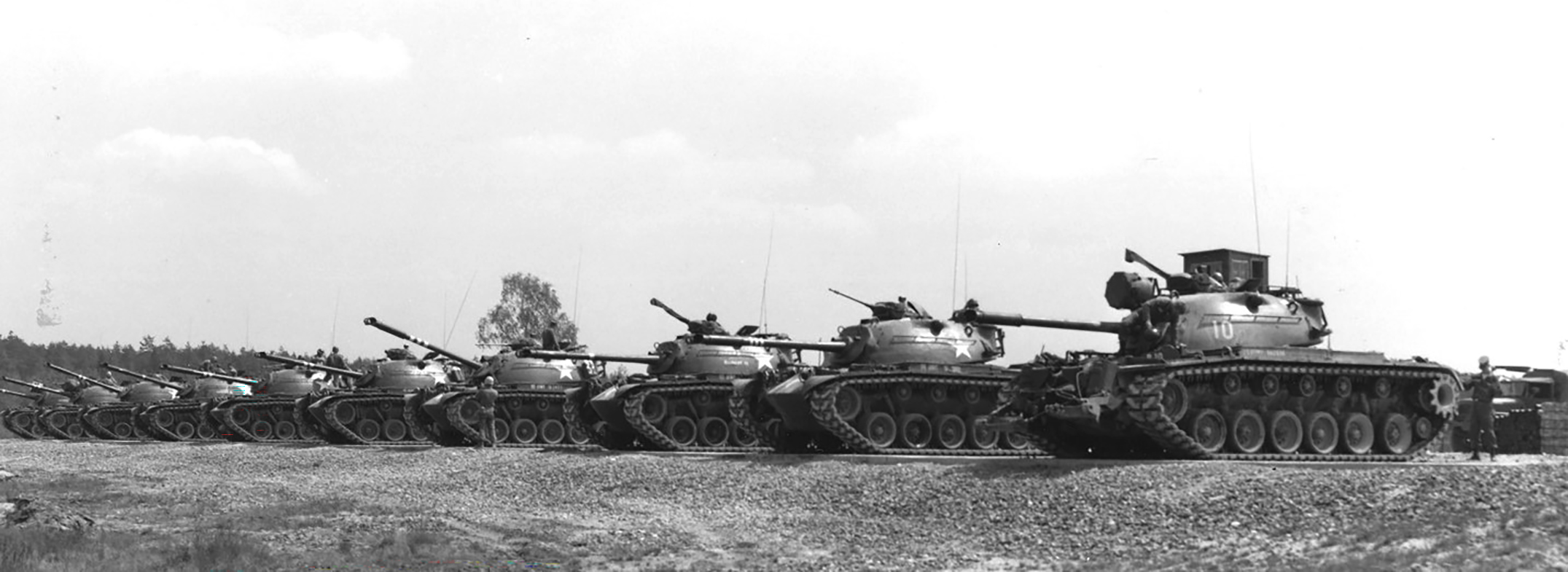
Figure 4. M48s on a gunnery range in Germany, 1959. (U.S. Army Armor and Cavalry Collection)
In the 1960s and 1970s tank weapons, optics, ammunition, and fire control systems continued to improve with the fielding of the M60-series. Had tank gunnery proficiency kept pace, the result would have been ever more capable and lethal tank crews, platoons, companies, and battalions — but it did not. The large-scale commitment of ground combat forces to Vietnam generated personnel turbulence that eroded cohesion among non-deploying units. Armor units in West Germany, for example, became little more than replacement pools for forces in Vietnam. Even without the war in Southeast Asia the personnel management system then in place determined individual soldier assignments with no set tour lengths and without regard to unit commander needs. Most units experienced a 30-40 percent turnover every quarter, exacerbated by the tendency of higher headquarters to siphon Soldiers. Commanders who managed to stabilize their tank crews until qualification experienced even higher turnover afterward.13
Managing personnel turbulence within units proved difficult when many experienced Armor NCOs either left the Army or branch transferred in the wake of the Vietnam War. Their loss was offset by the transfer and reclassification of NCOs from other branches who, despite their responsibility for training junior enlisted Armor crewmen, received no familiarization training before their assignment to tank units. The Armor School trained NCOs in necessary leadership skills but not the related technical competency. This was either learned on the job or through improvised unit schools.14 Hence new NCO tank commanders proved limited in their ability to supervise their crew members or fully utilize the capabilities of their tank. These problems were aggravated by the assignment of nonArmor command sergeant majors and first sergeants to tank units, where their lack of technical and tactical experience undermined their ability to mentor unit commanders and manage training.15 Similarly, new platoon leaders possessed a minimal knowledge of their tank and its capabilities, since their schoolhouse training focused upon preparation for positions of higher responsibility in the event of a mass mobilization rather than their next duty assignment.16
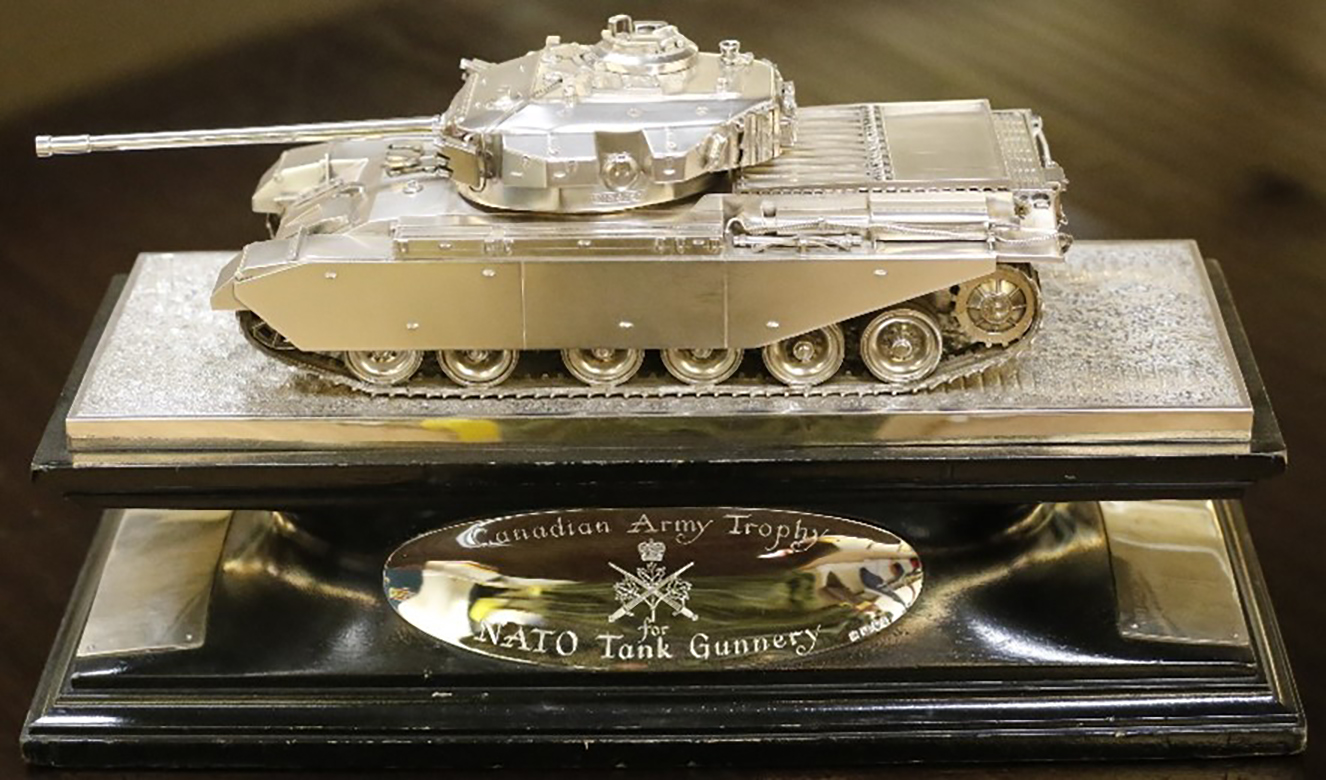
Figure 5. The Canadian Army Trophy. (Photo courtesy of the Royal Canadian Armoured Corps School)
Annual crew qualification served as the culminating event in gunnery training and an indication of unit readiness. Training remained a progressive development from individual to crew skills followed by live fire qualification. Yet while the platoon constituted the smallest maneuver unit and the backbone of an armored unit, collective training at the platoon or higher level faded along with the battle drills intended to hone unit muscle memory. Doctrine provided guidance for unit gunnery, but there was no corresponding gunnery table or evaluation requirement.17
Even with an emphasis only upon crew level training, unit commanders cited numerous challenges to achieving proficiency beyond personnel turbulence, including limited range access, funding shortfalls, the diversion of personnel to administrative tasks, and ammunition constraints.18 These issues, however, proved far less significant than the way crew training and qualification occurred. Qualification generally occurred on pristine ranges in which tanks did not practice firing from hull defilade, targets proved exceptionally large and distinctive, and target arrays never varied. Unit self-evaluations and poor recordkeeping did little to identify training deficiencies for correction, and participating crews considered qualification a rote exercise with little relation to the battlefield. Hence, its execution was often characterized by sloppy gunnery techniques that generated results in the unrealistic qualification environment but did not demonstrate tactical proficiency. Hence, once tank battalion commander characterized the entire nature of gunnery training and qualification as “… a farce—an unreal, artificial, misleading indicator of a crew’s ability to survive a tank-versus-tank battle. It’s barely the beginning of true tank gunnery training. As currently performed, it is possibly marksmanship, but not gunnery.”19
Such a condemnation boded ill for an armored force considered critical to the defense of Central Europe against the Warsaw Pact’s numerically superior armored and mechanized forces. Moreover, the 1973 Arab - Israeli War highlighted the importance of tank gunnery proficiency on the modern battlefield. This conflict forced the Army to confront the realities of a potential no-notice conflict in which its units entered combat in their current readiness state without the benefit of weeks and months in which to hone skills to combat standards. For tank units in Central Europe this prospect Figure 5. The Canadian Army Trophy. (Photo courtesy of the Royal Canadian Armoured Corps School) 5 Fall 2024 was frightening indeed, since popular forecasts of the life expectancy of a tanker in the event of war were measured in hours and days. The potential for a poor showing in combat found reinforcement in the lackluster performance of U.S. tank units in the Canadian Army Trophy in the late 1970s. This NATO competition was considered the “Olympics of tank gunnery,” and it received considerable international and media attention. The substandard performance of American participants drew negative attention to training and readiness issues in American armored formations on the frontline of a potential war with the Warsaw Pact.
In 1973 the newly created Training and Doctrine Command sought to transform Army training through emphasis upon raising combat readiness in preparation for a near-term large-scale conflict. The Arab - Israeli conflict of the same year spurred these efforts by demonstrating the cost of unpreparedness. Efforts to improve tank gunnery thus began within TRADOC’s broader, Army-wide training reform. Lessons learned from the Middle East war were disseminated to tank units via training circulars, and the Armor Center developed a proficiency test for tank crew members.20 Implementation of the tank master gunner program in 1975 generated subject matter experts to assist unit commanders with training, weapon operation and maintenance, and the correction of gunnery problems.21Tank gunnery doctrine also marked a renewed emphasis upon unit lethality with the introduction of a platoon gunnery table. Encouraged by the TRADOC’s readiness emphasis, units undertook their own training initiatives, introducing timed engagements and long-range precision engagements while highlighting the import of first round hits and ammunition conservation.22 The creation of the 19-series Career Management Field in 1978 enabled the identification of a specific skill set for armor crewmen to guide their selection and training.23
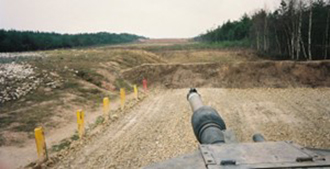
Figure 6. Tank from 2-64 Armor on Grafenwoehr’s Range 109. (U.S. Army photo by Ron Mihalko)
In the 1980s gunnery doctrine expanded the tank tables used to guide and evaluate training to include crew, section, and platoon. A matching set of tactical tables emerged to permit the development of both the technical skills associated with placing steel on target and tactical maneuver. Reflecting the need for true proficiency to fight outnumbered and win, qualification standards rose. Tankers were expected to develop the skills necessary to achieve minimal kill ratios of 5:1.24 These changes retained the progressive nature of training and evaluation but raised the bar for qualification and emphasized tasks and skills oriented upon the battlefield. Moreover, the deliberate linkage of new proficiency standards, soldier manuals, and Army Training and Evaluation Programs (ARTEP) resulted in clear training goals and strategies that included at least one battalion or brigade field training exercise per year. The opening of the National Training Center provided another training opportunity initially focused upon building maneuver and gunnery skills at platoon, company, and battalion levels. Laser based devices and simulators also broadened the array of training devices available to hone gunnery skills before a live fire event and sustain them afterward, with the Unit Conduct of Fire Trainer (UCOFT) becoming one of the most prominent tools.
The effectiveness of these changes lay in the active involvement of commanders and NCOs. The latter provided especially important due to their roles as tank gunners, tank commanders, and master gunners. Hence, Armor Branch worked to remove Armor NCOs from non-Armor duty assignments and return them to tank units. The master gunner program met its initial expectations, and these subject matter experts soon earned the esteem of their commanders. Unfortunately, many master gunners also served as platoon sergeants, and this dual responsibility discouraged master gunner candidates.25 Moving the master gunner into the company headquarters helped to resolve this problem, while expanding the amount of gunnery training given to all Armor NCOs enabled master gunners to concentrate their expertise upon areas of greatest benefit to their unit. The Armor School sought to make the Basic NCO Course responsible for developing tank commanders, while the Advanced NCO Course focused upon the generation of platoon sergeants and incorporated some master gunner training. Officer training similarly began to include coverage of the technical aspects of tank platoon and company operations. The establishment of One Station Unit Training and its orientation upon graduating Soldiers qualified to serve as a driver, loader, or gunner helped commanders offset personnel turbulence by giving them greater flexibility in crew station assignments.26
The collective benefit of these changes to doctrine, training, and personnel lay in the increased focus upon tank gunnery in the field. Qualification ceased to be a check the block item and became a serious training event. This shift in attitude was further encouraged by competition among units, fueled by the publication of qualification scores.27 Moreover, sustainment training via UCOFT and the generation of training schedules that embedded gunnery and tactical skills throughout the annual training cycle obviated the need for repetitive relearning of basic skills and enabled more advanced training.
The combination of higher crew and unit training standards, command emphasis, and increased training opportunities via training aids and simulators ensured that tank gunnery proficiency matched the capabilities of the M1/ M1A1 Abrams. The resultant lethality became evident during Operation Desert Storm in 1991. Battlefield clashes between American armor and the Iraqi army ended with catastrophic consequences to the latter. The conflict served to validate the changes made in the 1980s to tank gunnery doctrine, training methodology, leader development, and master gunner employment. It marked an apex in tank gunnery proficiency even though the orientation of armor training lay in waging a conflict against the Warsaw Pact in Central Europe rather than Iraq in the Middle East.
1990s
The end of the Cold War removed an external threat whose nature underscored the importance of a properly trained armored force. In the wake of superpower rivalry came a series of regional and humanitarian crises that involved the U.S. Army. Such operations other than war generally necessitated extensive training in non-warfighting activities, followed by deployment and then a period of retraining in warfighting skills. Army downsizing, the related loss of talent, and budget cuts amplified the disruptive effective of these deployments upon training in general. The decade also witnessed the emergence of an array of technological initiatives, collectively dubbed Force XXI, that strove to harness the emerging capabilities of information technology to tactical organizations and operations. By senior leader intent the initial focus of this technological development lay upon armored formations, whose leaders and Soldiers played key roles in related experimentation and testing.
Nevertheless, the aggregate effect of operations other than war, downsizing, fiscal retrenchment, and a flood of new technology lay in Army-wide disruptions to training. The absence of a peer threat further prompted some political leaders to question the need for a large tank force and the related expense. The resultant pressure to reduce training costs collided with efforts to sustain readiness, encouraging greater use of virtual and simulationsbased training and the shortening of programs of instruction. Within the Armor School, the cumulative impacts lay in the removal of main gun live fire from the Tank Commander Certification Course, rollbacks in the rank and grade of instructor personnel, and a burgeoning unfunded requirement for tank tracks and parts.28 Consequently, tank gunnery proficiency slumped, but it did not bottom out.
Tank gunnery standards remained high, and doctrine continued to evolve, incorporating lessons learned from Desert Storm. Moreover, the 1990s marked the emergence of the M1A2, the Army’s first digital tank. Its appearance marked another advance in materiel capabilities, since its digital systems provided significant improvments in communications and data sharing, and its commander’s independent thermal viewer boosted the ability to detect, acquire, and engage targets more quickly over a broader area. The fielding of the new tank reinforced the continued emphasis in training and doctrine upon long-range precision fire. Long distance gunnery, however, necessitated crews who practiced precision in their gunnery training and technique, particularly during boresight, and understood what factors determined whether a round hit or missed its target. The effect of even small errors upon ballistic trajectory and accuracy increased with range. Hence, fire control and weapon system maintenance, ammunition condition, and boresight became critical actions prior to firing, while the ability to lay the reticle on a target’s center mass, input barometric pressure, account for crosswinds, and offset peculiarities in a gun’s performance marked a seasoned gunner.29
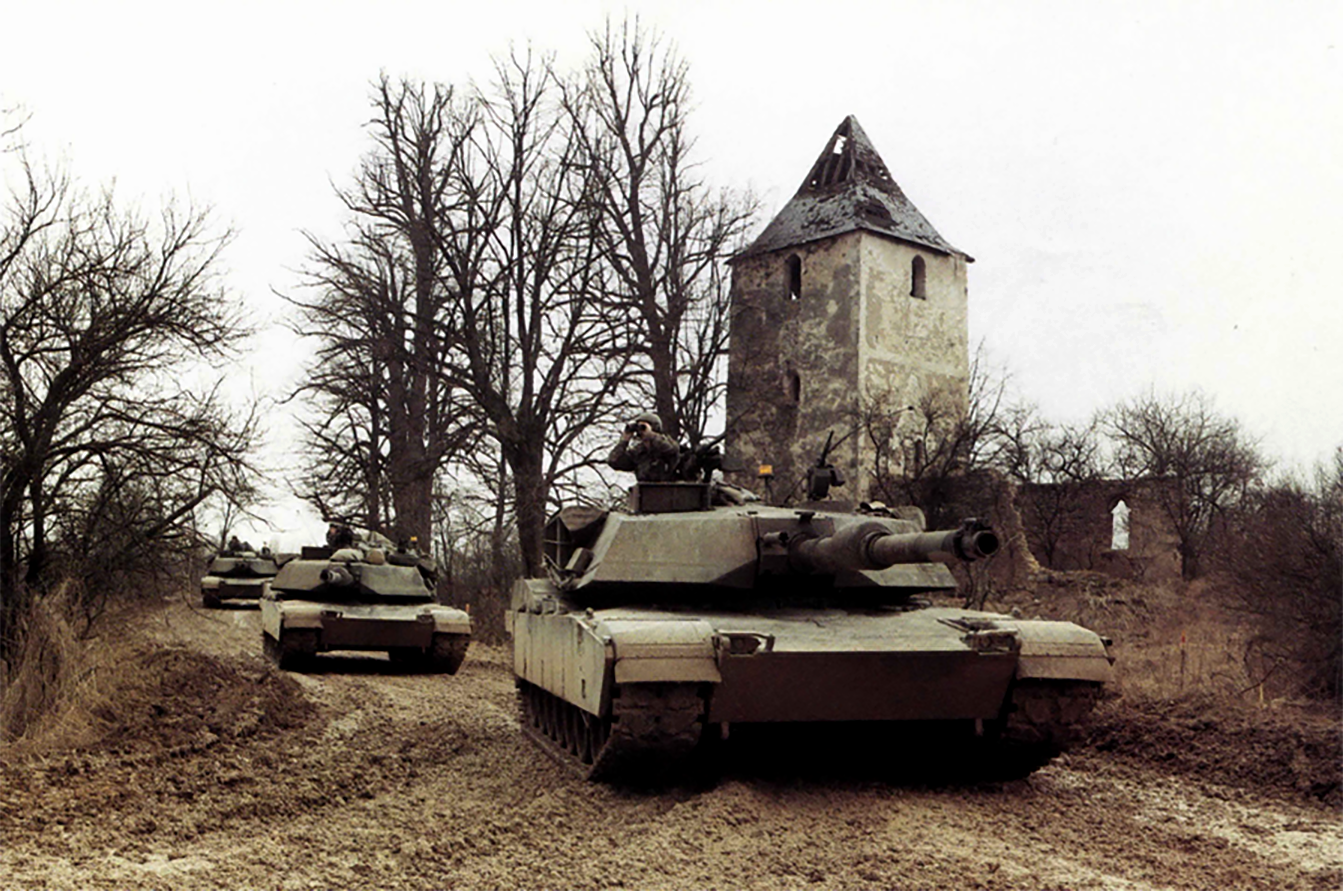
Figure 7. A tank platoon from 3rd Battalion, 64th Armor Regiment at Hohenfels, Germany. (U.S. Army photo by Ron Mihalko)
The start of Army Transformation in 1999 triggered the onset of a new wave of modernization initiatives heavily rooted in emerging technology. The focus lay upon the creation of the Objective Force with high tech, rapidly deployable organizations designed around information technology applications, unmanned aerial systems, robotic ground vehicles, and the Future Combat System. In this redesigned force, current armor units became part of the Legacy Force destined for replacement. Related funding streams diverted to Objective Force programs. A parallel effort generated the Initial Brigade Combat Team, renamed the Stryker Brigade Combat Team in 2002. Tank units were among the first billpayers for this new organization, while some armor crewmen suffered mandatory reclassification to MOS 19D.* Analysts feared that further involuntary reclassifications would “be bad for the morale of CMF 19. The perception will grow that 19K is no longer a viable career MOS.”30 Nevertheless, other tank units similarly reorganized into reconnaissance, surveillance and target acquisition (RSTA) squadrons and tankers were encouraged to become scouts. Hence, Transformation’s high tech, futuristic slant at the expense of current capabilities coupled with the emphasis given to scouts generated uncertainty among tankers about their future not entirely relieved by the initial fielding of the M1A2 SEP with its improved optics, ballistic protection, and data sharing capabilities
Global War on Terror
The Global War on Terror forced a rebalancing of the Army’s budget and focus. While the Objective Force remained a work in progress, the Legacy Figure 7. A tank platoon from 3rd Battalion, 64th Armor Regiment at Hohenfels, Germany. (U.S. Army photo by Ron Mihalko) 7 Fall 2024 Force went to war. In Operation Iraqi Freedom, armored units played a central role in the rapid defeat of Iraqi conventional forces, the capture of Baghdad, and the collapse of Saddam Hussein’s regime in 2003. The next year armored units again applied mobility, shock, and firepower to suppress the Easter Uprising. Collectively, these actions showcased the effectiveness of crews proficient in maneuver and sustainment while validating existing tank gunnery doctrine and standards. Moreover, in the training and development of crew effectiveness, unit commanders relied extensively upon their master gunners. Unsurprisingly, the execution of gunnery training that followed doctrine, pursued established standards, and reflected the active involvement of leaders and master gunners yielded success in battle. The established process of generating individual, crew, and unit gunnery proficiency honed over the years worked.31
Yet 2004 marked another turning of the tide in the ebb and flow of gunnery skills. The Army committed to a sustained period of counterinsurgency operations (COIN) in both Afghanistan and Iraq, and it undertook force structure changes to support the related deployment operational tempo. Brigades replaced divisions as the principal unit of action, enabled through the reorganization of division assets to facilitate the creation of more but smaller brigade combat teams. The resultant organizational reshuffling eliminated the tank battalion and replaced it with a combined arms battalion of tank and mechanized infantry companies. Battalion leadership was no longer restricted to Armor personnel, resulting in combined arms battalions led by officers and senior NCOs without training or service experience in tanks.32 This knowledge deficit directly impacted the oversight, training, and mentorship of Armor personnel. Moreover, the elimination of tank battalions reduced the number of tank master gunners to support gunnery training, while the smaller size of the tank company — now the Army’s largest armor unit — amplified the impact of personnel turbulence, skill deficits, or other issues that could not be offset at battalion level due to the reduced armor expertise resident in the combined arms battalion.
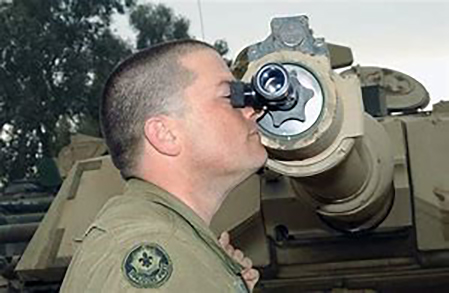
Figure 8. Using the in-bore muzzle boresight device. (U.S. Army photo by Carl R. Johnson)
Institutional training changed to reflect the needs of the next deployment and current operational environment. While such modifications prepared individuals and units for overseas operations, the protracted nature of the Global War on Terror made such modification the norm rather than a temporary adjustment to address a singular deployment. Consequently, for nearly two decades training and doctrine skewed to reflect COIN rather than the broader range of military operations. This duration resulted in a generation of Soldiers and leaders whose primary military experience reflected only COIN and its comparatively narrow range of skills.
The impact upon tank gunnery proficiency proved wholly negative. Initial adjustments to gunnery training included a greater focus upon short range, urban engagements and increased attention to machine gun engagements.33 Precision, long-range gunnery remained a staple of gunnery manuals, but in practice it became eclipsed by the need to hone those skills considered critical to the next deployment. Tank units that functioned as motorized infantry or deployed overseas as a provisional infantry brigade needed dismounted skill training and familiarity with HMMWVS and MRAPS more than tank gunnery.34
Moreover, the high deployment tempo and the need for COIN-related skills overshadowed preparation for other types of operations. In 2007, for example, active brigade combat teams spent 15 months deployed and 12 or less at home station between deployments, resulting in compressed training narrowly focused upon the next COIN deployment.35 Vice Chief of Staff for the Army GEN Richard A. Cody noted in testimony before Congress that “We are only able to train them [Army units and personnel] … for counterinsurgency operations. They’re not trained to full-spectrum operations.” Consequently, skills critical to other types of operations atrophied.36 The chart below shows the disposition of Career Management Field 19 personnel in 2007 with 81 percent either deployed or slated to do so. Indeed, the same year marked a shortening of the tank master gunner course and a sharp reduction in the time available for units to prepare for combat training center rotations. The latter increasingly reflected skills needed for counterinsurgency operations rather than the high intensity warfare of earlier years, once symbolized by the National Training Center’s live fire event in which the manipulation of target arrays represented an attack by a hostile motorized rifle regiment.37
Armor brigade combat teams, faced with compressed training timelines and recurring deployments found little time for traditional gunnery and combined arms maneuver. The frequency of gunnery fell from semi-annually to perhaps once or twice over a three-year period. Indeed, some units completed training cycles in preparation for deployment without executing any core gunnery or maneuver mission sets. Tank crews ceased to perform gunnery skill testing and crew qualification every six months as required, and some crews found their platform knowledge fading during deployments in which they did not serve on a tank. The 2011 chart below, based on data compiled over several years, indicates the frequency of tank gunnery training.38 Given such circumstances, even master gunners could not stem the bleed out of platform-related skills and proficiencies, particularly when units experienced shortages of master gunners.
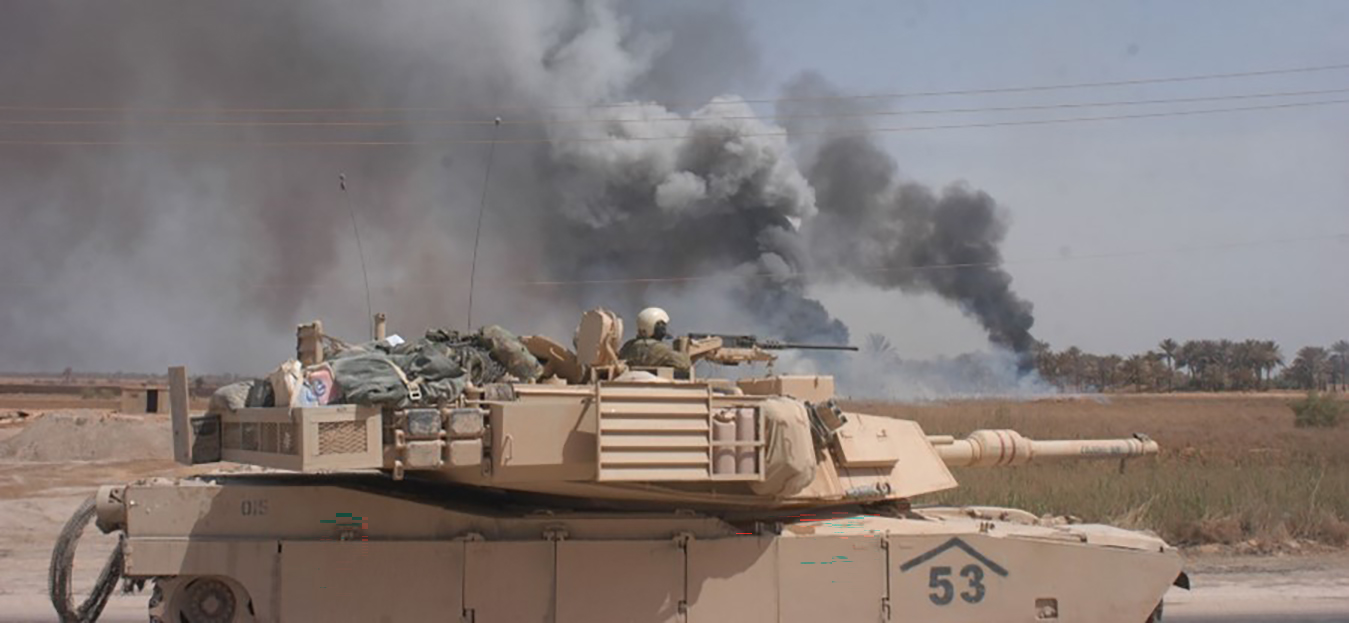
Figure 9. An M1A1 of the 3rd Infantry Division during Operation Iraqi Freedom I. The extended bustle rack was fabricated before the invasion began when it became clear that division combat units would need more supplies than their trains could accommodate. (U.S. Army Armor School Branch Archives)
When the Armor School relocated from Fort Knox to Fort Benning (now Fort Moore) to become part of the Maneuver Center of Excellence (MCoE), NCO instruction changed. The integration of Armor and Infantry NCO training largely ended the Armor School’s prior efforts to groom tank commanders and tank platoon sergeants through its branch specific NCOA and introduce at least some master gunner content into course curricula. Worse, units proved reluctant to send their NCOs to the master gunner course, and the Armor School found itself obliged to sell the tank master gunner program and its benefits to the force. Units that did send Soldiers to master gunner training too often failed to prepare them, tasked individuals who demonstrated little interest in attending, and expected master gunner students to address unit responsibilities while in school.39
Indeed, even in 2022 units demonstrated a reluctance to send Soldiers to attend master gunner training, despite the critical assistance these experts could provide to rebuilding gunnery proficiency. Soldiers selected to attend this instruction often did not satisfy the prerequisites for the tank master gunner course, and they could only attend with a waiver. The Armor School, acknowledging the need for more master gunners, responded by eliminating the prerequisites, accepting all candidates, and restructuring the course to permit students to repeat training in subjects whose evaluation they failed. A variety of products also became available online to prepare them for the course, but too many units did not send their best candidates or ensure their access to pretraining.40
Post Global War on Terror
When the U.S. withdrew its combat forces from Iraq and then began to reduce its footprint in Afghanistan prior to its complete withdrawal in 2021, the Army had begun to shift its focus from COIN to large-scale combat operations against a peer or near-peer threat. By then, however, it was clear that the atrophy of skills related to combined arms maneuver in general and gunnery in particular made the execution of actions across the range of military operations impossible without extensive retraining.41 For armor brigade combat teams, the ability to concentrate upon rebuilding tactical competencies suffered disruptions from personnel turbulence and continued deployments that tended to increase after the Russian seizure and annexation of Crimea in 2014. Hence many armor units found themselves either preparing for an overseas tour or deployed, reducing their training time at home station. This tempo took a toll on morale and was considered a factor in higher-thannormal suicide rates in active duty armor units.42
Rebuilding armor tactical and technical competencies remained a work in progress. Gradual improvement occurred, though undermined by crew shortages that necessitated the improvised employment of infantry Soldiers as tank crew members in combined arms battalions. This solution provided manpower, but the lack of background training of these personnel as tankers complicated the development of crew cohesion and qualification. Readiness issues within armor brigade combat teams contributed to the Armor School’s decision to focus its basic officer leadership course upon the tank platoon, removing all unrelated content from the curriculum. This revision enabled junior officers to be immersed in tank operations and related platform skills, resulting in some new platoon leaders arriving at their first duty assignment knowing more about their tank than the Soldiers they commanded.43 This new dynamic upended the traditional reliance of new platoon leaders upon the technical expertise of their platoon sergeant.
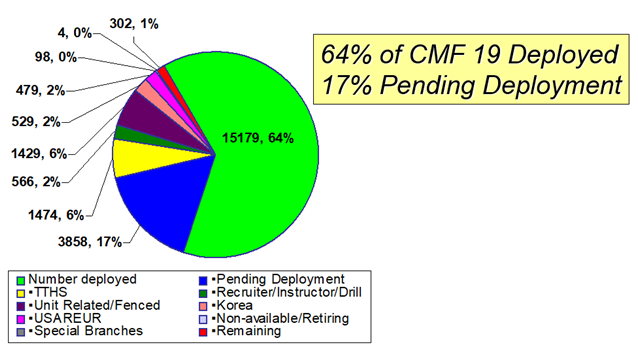
Figure 10. Armor personnel status in 2007. (U.S. Army graphic)44
The steady erosion of tank gunnery proficiency and related skills that occurred throughout the Global War on Terror was not matched by a parallel drop in materiel capability. The reverse occurred. The Abrams tank continued to evolve from the M1A2 SEP v1 to v3 with concomitant boosts in the fire control system, network capabilities, optics, and ammunition that collectively raised the platform’s lethality and precision. Unfortunately, these improvements only widened the gap between technological capability and crew ability.
Corrective measures included changes to doctrine, most notably the adoption of the Integrated Weapons Training Strategy, which standardized the process of training and qualification for all weapons. It therefore marked a significant simplification of gunnery training management for unit commanders.45 Gunnery doctrine also identified training objectives to be achieved in an annual training cycle but gave commanders flexibility in determining the sequencing and nature of engagements to achieve them.* Unfortunately, such flexibility resulted in wildly varied approaches and shortcuts that stymied efforts to track training efficacy and readiness. Consequently, the next gunnery manual scheduled for publication in 2024, Training Circular (TC) 3-20.31- 120, Gunnery: Heavy Tank will remove this flexibility and raise training standards. These changes will align tank gunnery with the needs of large-scale combat operations against a peer or near-peer threat, and, through uniformity, simplify efforts to track and assess training progress.
Personnel turbulence remained a major factor undermining gunnery training and proficiency. Constant 9 Fall 2024 personnel turnovers undermined efforts to stabilize crews and develop the cohesion necessary to progress through training, qualify, and then sustain their training level. Changes in crews too often resulted in frequent restarts on the path to crew qualification that eroded overall unit readiness. The Armor School sought to resolve this problem through an initiative known as Armor Standardization and Training Strategy 2030 that included a mechanism to track the skill and readiness of tank commanders and gunners. As they moved from unit to unit, visibility of their readiness level facilitated integration into crews without necessarily having to requalify each tank crew after its composition changed. Related actions included efforts to restore platform instruction to the NCO Advanced Leader Course and the redesign of master gunner instruction to focus entirely upon separate, platform specific courses. The Armor School also sought to stabilize master gunners in duty assignments that leveraged their expertise without jeopardizing career progression, and it considered creation of an Armor warrant officer to serve as master gunner at battalion and higher echelons.46
However, rebuilding tank gunnery proficiency across the force requires time — and there are no shortcuts. In the same manner that reps and sets are touted as the key to attaining physical fitness, so too for tank gunnery. It is a skill that must be learned through doing and sustained through recurring training events. The declination of gunnery proficiency occurred over more than a decade, and the skills and knowledge necessary to achieve and sustain the standards in current doctrine cannot be mastered on the fly. Achieving mastery of tank gunnery skills necessitates a dedicated and persistent effort by Soldiers and commanders employing the full array of talent, training aids, and doctrinal publications available, particularly given current challenges. The Army’s recruiting problem and related difficulties attracting volunteers to combat arms directly links to the personnel shortages in armor units. Recent Army force structure changes, the pending fielding of new materiel, and ongoing efforts to integrate unmanned aerial systems, robotic combat vehicles, and artificial intelligence capabilities into units and formations will also have an initially disruptive effect. In the meantime, the daily depiction of relatively inexpensive first-person view drones destroying armored fighting vehicles in the war in Ukraine encourages a climate of skepticism concerning the continued battlefield relevance of the tank.
Such challenges are not new and can be managed. Historically, the key factors in achieving tank gunnery proficiency have been active and persistent command involvement, adherence to established training standards derived from an intimate knowledge of gunnery doctrine, and effective training management. External events have often served as a forcing function, but this influence has not proven consistently beneficial. Whereas the last decade of the Cold War tended to reinforce constructive changes in tank gunnery training, the Global War on Terror discouraged gunnery proficiency. Similarly, changes in technology, personnel factors, and budget constraints are persistent shaping influences to be treated as planning factors. Live fire still constitutes the most important gunnery training event, but its maximum benefit will only be realized by units that make full use of the range of training aids, simulators, and facilities available to them before arriving on the range and afterward for skill sustainment. Only then will crews gain the proficiency necessary to realize the full lethality potential of their tanks.
Notes
1.CPT Matthew T. Miller and 1SG Andrew L. Leatherbury, “Closing the Lethality Gap: Trend Analysis from Sullivan Cup 2022 and Application of Integrated Weapons Training Strategy (Part I),” ARMOR, CXXXVIV, 3 (Summer 2022), pp. 11-1
2. Memorandum, CPT George S. Patton Jr. to Chief of the Tank Service, Subj: Light Tanks, 12 December 1917, pp. 24-30, USAARMS Branch Archives, Evolution of Armor/Tank Gunnery/WWI.
3.War Department, Training Regulations 420-270, Infantry Tank Marksmanship (Washington, D.C.: War Department, 29 June 1929).
4. War Department, Infantry Field Manual, Volume II: Tank Units (Washington, D.C.: War Department, 1931); Report, The Infantry School, Subj: Notes on Tank Marksmanship, 1936-1937, USAARMS Branch Archives, Evolution of Armor/Tank Gunnery/1930s.
5.Memorandum, COL D.S. Wilson to Infantry School Assistant Commandant, Subj: Tank Gunnery, 5 December 1939, USAARMS Branch Archives, Evolution of Armor/Tank Gunnery/1930s.
6. War Department, Field Manual (FM) 17- 12: Tank Gunnery (Washington, D.C.: U.S. Government Printing Office, 1943); War Department, FM 17-12: Tank Gunnery (Washington, D.C.: War Department, 1944); United States Forces European Theater General Board, Tank Gunnery, Report, 1945, pp. 18-19, Appendices 2 and 7.
7. General Board, Tank Gunnery, pp. 19- 20.
8. Ibid, pp. 20-21, Appendix 8.
9. James F. Schnabel, Policy and Direction: The First Year (Washington, D.C.: Center of Military History, 1992), pp. 52-54.
10.James A. Huston, Guns and Butter, Powder and Rice: U.S. Army Logistics in the Korean War (Cranbury, New Jersey: Associated University Presses, 1989), p. 35.
11. COL L.L. Doan, “Training Tank Crews,” ARMOR, LXI, 1 (January-February 1952), pp. 30-32.
12. BG Hamilton H. Howze, “Notes on the Training of an Armored Division,” ARMOR, LXII, 6 (November-December 1953), pp. 6-13; LTC Roy L. Dedmon, “Tank Crew Proficiency Courses,” ARMOR, LXVI, 1 (January-February 1957), pp. 26-28; MG G.S. Patton, Letter to the editor, ARMOR, LXXXIV, 1 (January-February 1975), pp. 2-3; MAJ John B. Whitehead, “Battleruns,” ARMOR, LXXXVI, 2 (March-April 1977), p. 18.
13. Donn A. Starry, “Training Key to Success of Force Modernization,” included in Lewis Sorley (ed.), Press On! Selected Works of General Donn A. Starry, Vol. II (Fort Leavenworth, Kansas: Combat Studies Institute Press, 2009), pp. 834-835; LTC John C. Bahnsen, “Gaining the Edge,” ARMOR, LXXXV, 1 (January-February 1976), p. 51; Lieutenant Colonel Eric L. Prall, “Tank Crew Proficiency Testing,” ARMOR, LXXXV, 5 (September-October 1976), p. 13; MG John W. McEnery, “Shoot First – and Win!” ARMOR, LXXXV, 6 (November-December 1976), p. 5.
14. “Tank Forces Management: Man and Machine,” ARMOR, LXXXVI, 4 (July-August 1977), pp. 7-8.
15. “Tank Forces Management: Man and Machine,” pp. 6-7; Prall, “Tank Crew Proficiency Testing,” p. 13. Letter, Starry to Gorman, 28 January 1974, p. 770, and Starry, “Training Key to Success of Force Modernization,” p. 835, included in Lewis Sorley (ed.), Press On! Selected Works of General Donn A. Starry, Vol. II (Fort Leavenworth, Kansas: Combat Studies Institute Press, 2009).
16. LTCs Romie L. Brownlee and William J. Mullen III, Changing an Army: An Oral History of General William E. DePuy, USA Retired (Carlisle Barracks, Pennsylvania: U.S. Military History Institute, 1979), p. 183.
17. Letter, Starry to Gorman, 28 January 1974; Headquarters, Department of the Army, FM 17-12, Tank Gunnery (Washington, D.C.: Department of the Army, 1972).
18. Letter, Starry to Gorman, 28 January 1974; MAJ John K. Waters Jr., Letter to the editor, ARMOR, LXXXIV, 1 (January-February 1975), p. 2; Bahnsen, “Gaining the Edge,” p. 51; Prall, “Tank Crew Proficiency Testing,” p. 13; McEnery, “Shoot First –and Win!” p. 6; Whitehead, “Battleruns,” pp. 18, 19, 21.
19. LTC John C. Bahnsen, “Our Tank Gunnery Needs a Revival,” ARMOR, LXXXIII, 5 (September-October 1974), pp. 21-23. Quotation from p. 21.
20. See for example Department of the Army, TC 17-12-5, Tank Gunnery Training (Washington, D.C.: Department of the Army, 1975). U.S. Army Armor School, TC 17-15-8 (Test), Armor Crewman Physical Proficiency Test (Washington, D.C.: Department of the Army, 1974).
21. MSG Wakeland K. Kuamoo, “Master Gunners — 20 Years Later,” ARMOR, CIV, 6 (November-December 1995), pp. 37-38.
22. 2 Bahnsen, “Our Tank Gunnery Needs a Revival,” pp. 21-23; LTC Charles E. Honoré, “Tank Gunnery Under Fire,” ARMOR, LXXXIV, 5 (September-October 1975), pp. 19-23.
23. 3 Karl E. Cocke et al. Department of the Army Historical Summary: Fiscal Year 1977 (Washington, D.C.: Center of Military History, 1979), p. 20; “Tank Forces Management: Man and Machine,” p. 6.
24. Department of the Army, FM 17-12, Tank Gunnery, Change 2 (Washington, D.C.: Headquarters, Department of the Army, 1980).
25. “Armor Manning Issues,” ARMOR, XCIII, 4 (July-August 1983), pp. 38-39; MG Frederic J. Brown, “Manning Issues Revisited,” ARMOR, XCIV, 2 (March-April 1985), p. 7; MG Thomas H. Tait, “Noncommissioned Officers,” ARMOR, XCVI, 3 (May-June 1987), p. 6; CSM John M. Stephens, “Is the Master Gunner Competitive?” ARMOR, XCIV, 2 (March-April 1985), p.
26. MG Thomas P. Lynch,” Update on Armor Training Strategy for the 1980s,” ARMOR, LXXXIX, 3 (May-June 1980), pp. 4-5; “Armor Training Strategies for the 1980s,” ARMOR, LXXXIX, 4 (July-August 1980), pp. MG Louis C. Wagner Jr., “Commander’s Hatch,” ARMOR, XC, 2 (March-April 1981), pp. 3-4; “The Armor NCO Advanced Course,” ARMOR, XC, 4 (July-August 1981), pp. 7-8; “The Basic NCO Course,” ARMOR, XC, 5 (September-October 1981), pp. 7-8; CSM John W. Gillis, “Training Second Lieutenants,” ARMOR, XC, 4 (July-August 1981), pp. 9-10.
27. See for example LTC Robert W. Whitton, “Gunnery Record Noted,” ARMOR, XCV, 4 (July-August 1986), p. 3; “2-66 Armor Sets USAREUR Standard,” ARMOR, SCV, 5 (September-October 1986), p. 49; or “3ACR Runs Army’s First M1A1 Qualification Gunnery,” ARMOR, XCVI, 3 (May-June 1987), p. 51.
28. 16th Cavalry, TRADOC Status Report, March 1997; 16th Cavalry Quarterly Training Briefings, 18 June and 27 October 1997. Both files in USAARMS Branch Archives, Box 27.
29. MAJ Bruce J. Held and MSG Edward S. Sunoski, “Tank Gun Accuracy,” ARMOR, CII, 1 (January-February 1993), pp. 6-11.
30. Briefing, Task Force Manning to Brigadier General Grazioplene, Subj: Personnel Management Strategy, 25 January 2000, USAARMS Branch Archives, ACH 2000/ OCOA/ACH 2000/DIR OCOA.
31. Master Gunner Field Survey, 2004, USAARMS Branch Archives, Box 254.
32. Briefing, Office of the Chief of Armor, Subj: Armor Transformation, 2006, USAARMS Branch Archives, ACH 2006/OCOA/Modular BCT Impact on AR BR.
33. Headquarters, Department of the Army, FM 3-20.12, Tank Gunnery (Abrams) (Washington, D.C.: Department of the Army, 2005).
34. Briefing, COL Gary Nicoson (TCM HBCT), Subj: HBCT Maneuver Gunnery Skills, 2011, USAARMS Branch Archives, Box 340.
35. Center for a New American Security, “The State of the U.S. Army,” Fact Sheet, November 2007, USAARMS Branch Archives, 07 ACH/Army/Readiness/Assessments.
36. “Military Is Ill-Prepared for Other Conflicts,” Washington Post, 19 March 2007. Quotation from same.
37. Armor Conference Briefing, MG Robert M. Williams, Subj: Armor: Strong Today; Strong Tomorrow, 2007, USAARMS Branch Archives, 07 ACH/Armor Conf/CG Opening; COL R. Jenks Reid, Training Ground Combat Forces for Operation Iraqi Freedom, Report, Naval War College, 6 November 2007, p. 14, USAARMS Branch Archives, 07 ACH, Army/Readiness/OIF and Training Changes.
38. Armor Conference Briefing, MG Robert M. Williams, Subj: Armor: Strong Today; Strong Tomorrow, 2007.
39. Briefing, COL Gary Nicoson (TCM HBCT), Subj: HBCT Maneuver Gunnery Skills, 2011.
40. Briefing, MAJ Bender and 1SG Ninelist (316th Cavalry Brigade) to Armor School commandant, Subj: Master Gunner Training, July 2010, USAARMS Branch Archives, Box 359.
41. BG Thomas M. Feltey End of Tour Interview, 27 March 2023, pp. 14-15, USAARMS Branch Archives, 2023 Annual Command History files
42. LTG Michael S. Tucker, “Combined-Arms Gunnery: Restoring the Fundamentals,” ARMOR, CXXVI, 4 (October-December 2015), pp. 8-11.
43. Davis Winkie, “Broken Track: Suicides and Suffering in Army’s Exhausted Armor Community,” Army Times, 11 March 2024.
44. Briefing, BG David A. Lesperance and CSM Kevin J. Muhlenbeck, Subj: Branch Update, 15 November 2018, USAARMS Branch Archives, 18ACH/AR School/Cmdt; Captains Nathan Sitterley, Mackenzie Azbell, Charles Huber, and Michael Hourihan, “2-16 CAV,” Maneuver Center of Excellence E-Newsletter, March 2019, pp. 18-20, USAAARMS Branch Archives, 19ACH/MCOE/Digital Newsletter.
45. Headquarters, Department of the Army, TC 3-20.0, Integrated Weapons Training Strategy (Washington, D.C.: Department of the Army, 2015).
46. Feltey End of Tour Interview, pp. 75-80.
Dr. Robert Cameron is the Armor Branch Historian, U.S. Army Armor School, Fort Moore, GA. He has held this position since 1996. Dr. Cameron is an honorary graduate of Armor Office Basic Course, Armor School, Fort Knox, KY, 1996. He has a bachelor’s of arts degree in history from SUNY Binghamton (now Binghamton University); a bachelor’s of arts degree in economics from SUNY Binghamton (now Binghamton University) and a doctorate degree (Ph.D.) in modern military history from Temple University. Dr. Cameron is the author of several articles and books, including To Fight or Not to Fight?: Organizational and Doctrinal Trends in Mounted Maneuver Reconnaissance from the Interwar Years to Operation IRAQI FREEDOM (Fort Leavenworth, KS: Combat Studies Institute Press, 2010).
Acronym Quick-Scan
ARTEP – Army Training and Evaluation Programs
COIN – counterinsurgency operations
FM – field manual
MCoE – Maneuver Center of Excellence
MOS – military occupational specialty
RSTA – reconnaissance, surveillance and target acquisition
TC – training circular
UCOFT – Unit Conduct of Fire Trainer
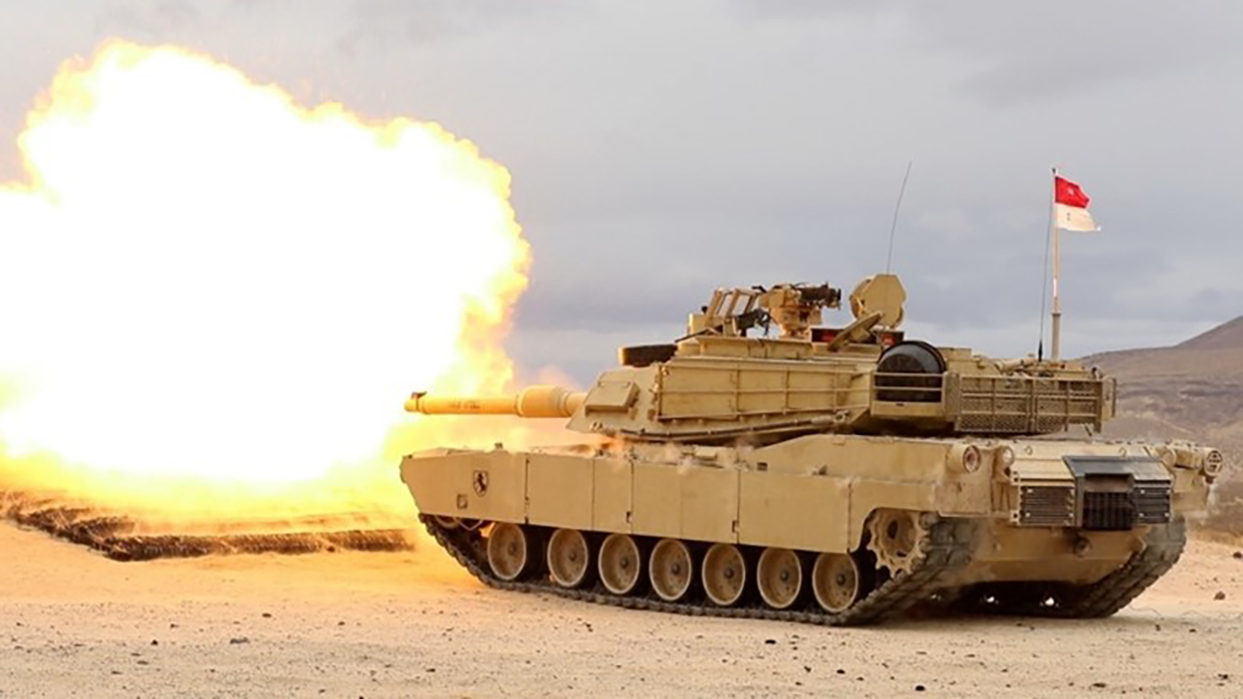
Figure 12. An M1A2 Abrams SEP V2 main battle tank of the 11th Armored Cavalry Regiment fires a M865 training round at the National Training Center and Fort Irwin training area, Dec. 9, 2021. (U.S. Army photo)
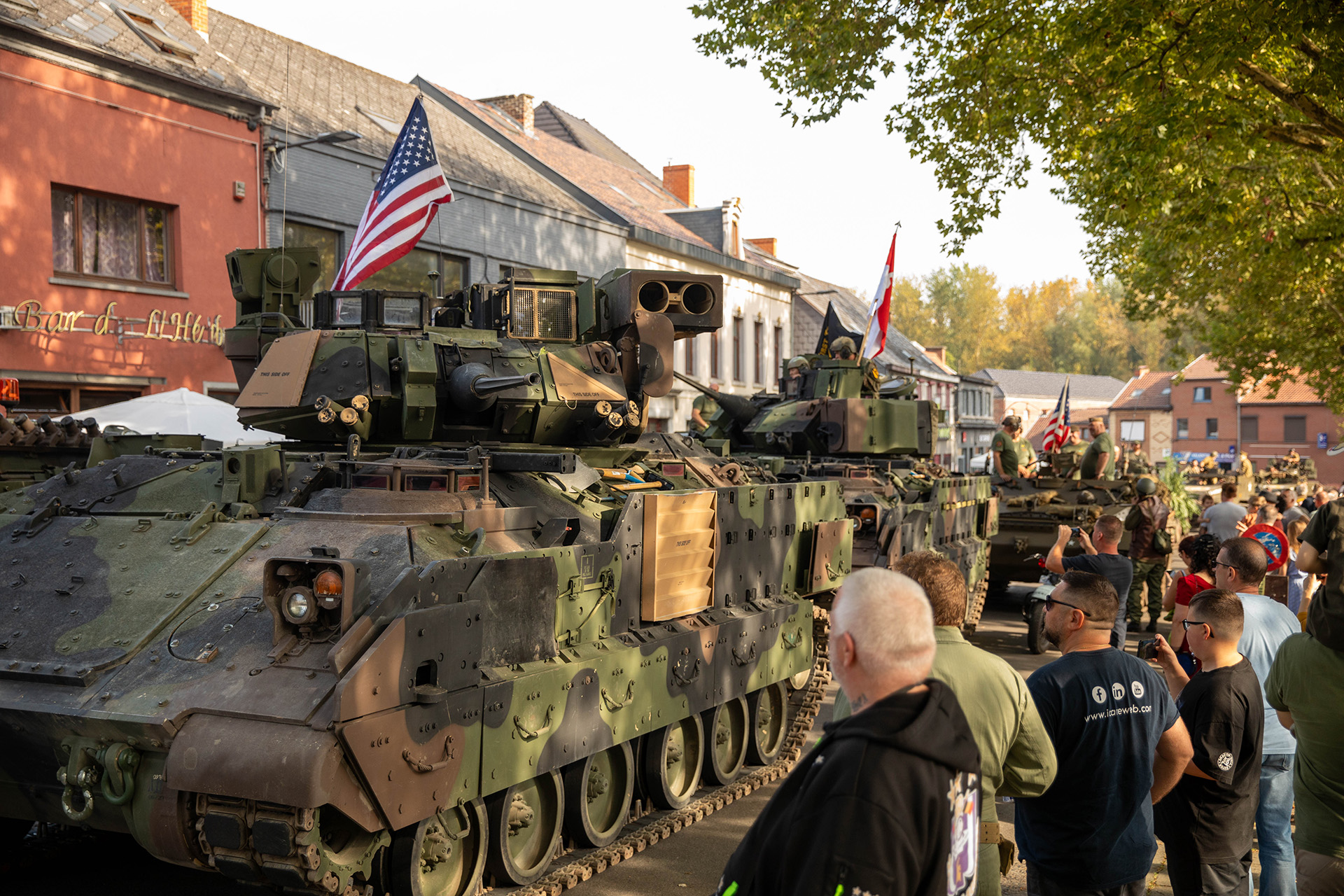
MONS, BELGIUM (Sept. 1, 2024) – Locals interact with U.S. Army Soldiers and an M2A3 Bradley Infantry Fighting Vehicle from 2nd Battalion, 5th Cavalry Regiment, 1st Armored Brigade Combat Team, 1st Cavalry Division, during the Tanks in Town commemoration event in Mons, Belgium, Sept. 1, 2024. V Corps regularly provides personnel and equipment to support community events in various countries across Europe. (U.S. Army photo by PFC Richard Morgan)